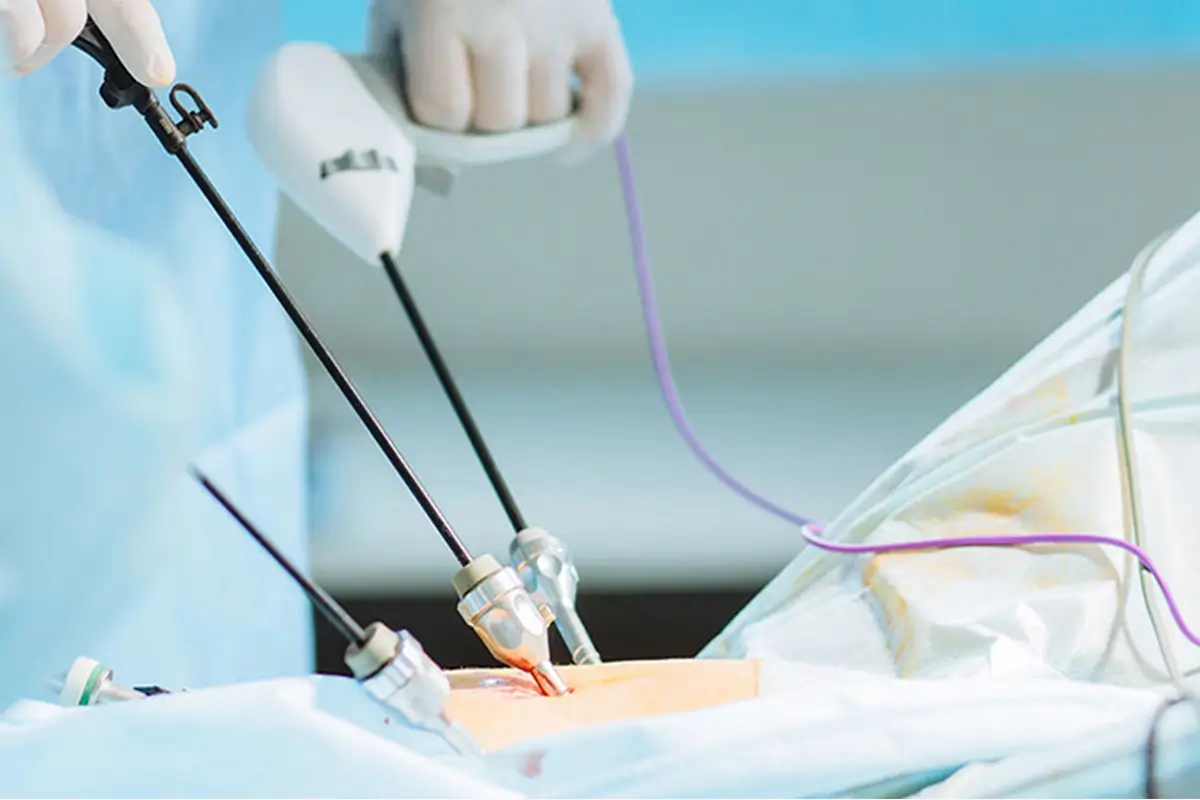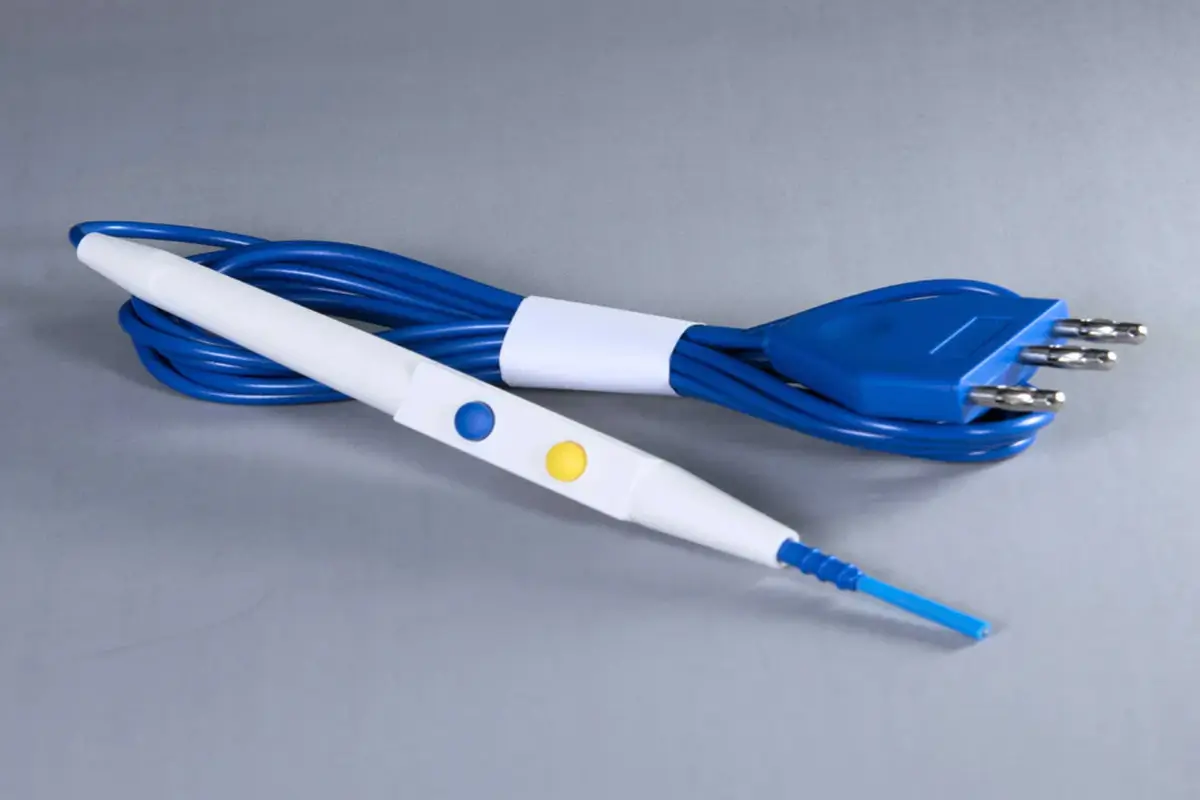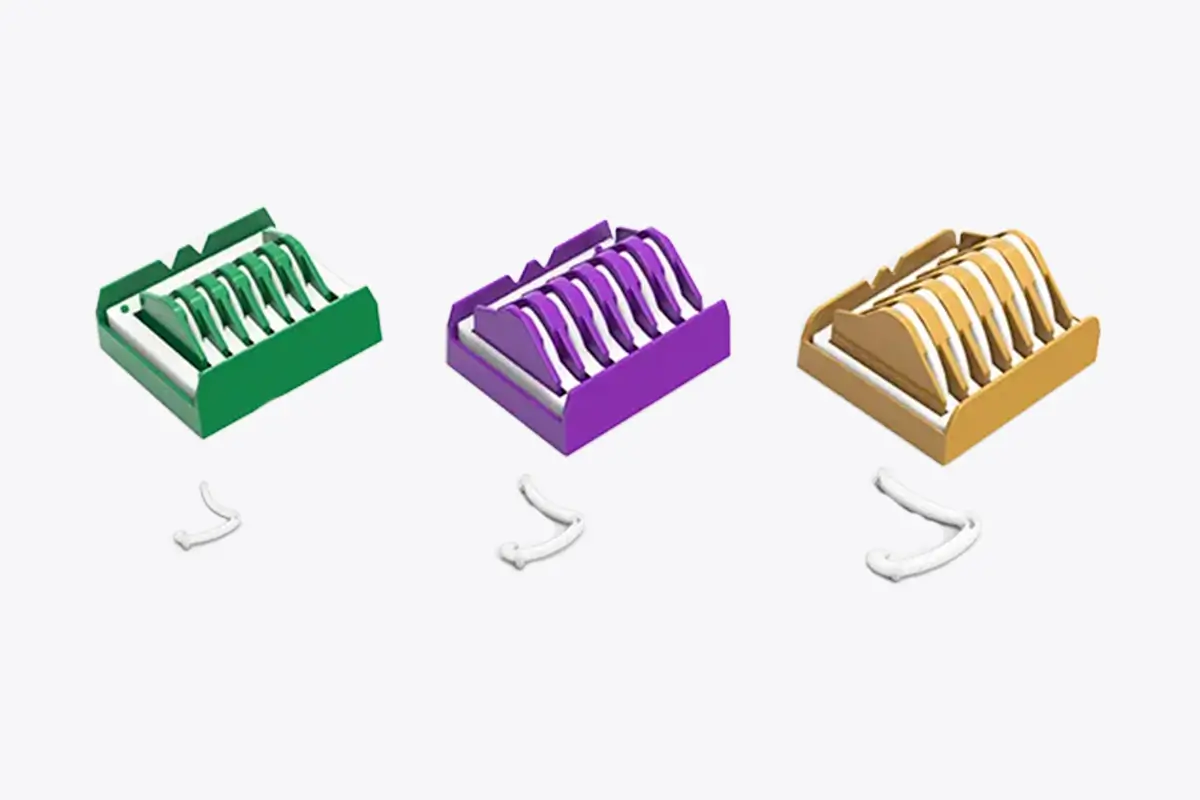Electrocautery Pencil (Cautery Pencil / Monopolar Electrosurgical Pencil)
The electrocautery pencil (also known as a cautery pencil or monopolar electrosurgical pencil) is a primary and essential accessory that complements the electrosurgery unit. Its function is analogous to the electrode clamp of a welding machine, without which welding or cutting would not be possible.
The electrosurgery unit is a radiofrequency generator to which two electrodes are connected. One of these electrodes, known as the active electrode, typically has a smaller cross-sectional area and is designed in the form of a pen-like instrument, hence it is also called an electrocautery pencil. Due to the smaller cross-sectional area of this electrode compared to the other (the dispersive electrode), a higher current density is created at its tip, resulting in the generation of significant heat. This heat is used for cutting or coagulating body tissues. For this reason, the electrocautery pencil is also referred to as an electric cutting knife.
The electrocautery pencil has a shape similar to a surgical scalpel, and its handle is insulated. Two switches are located on the handle: one for cutting and the other for coagulation, which are activated by applying current to the probe. The yellow button near the tip of the pencil is for the cutting mode, and the blue button is for the coagulation mode.
Cautery pencils are divided into two types: reusable and single-use. They are available in single-pin and three-pin configurations to be compatible with various electrosurgery units, such as those from Martin, Erbe, and Valleylab. Additionally, some models of electrocautery pencils feature interchangeable electrode tips, allowing the user to utilize tips with different shapes based on their specific needs. When selecting a pencil and electrode tip, attention should be paid to the diameter of the electrode tip’s base, as the size of the receiving hole in different types of reusable pencils varies.
Electrode tips for cautery pencils are manufactured in various sizes and are suitable for different surgical procedures. The cross-section of these tips is always smooth and polished to prevent tissue adhesion.
Important Considerations When Using an Electrocautery Pencil
- The electrocautery pencil should not have any fractures, cracks, or chips.
- The cord of the electrocautery pencil should not have any tears or punctures at any point.
- Cautery pencils that are not in use during the procedure should be kept away from the electrosurgery unit and the patient’s body to prevent accidental burns or injury to the patient or the surgical team.
- The electrocautery pencil should always be clean and free of any signs of previous use.
- Ultrasonic cleaning baths or hot air devices should not be used to clean the electrocautery pencil. It is best to clean the pencil with alcohol or disinfectants according to the cleaning instructions after each use, and if necessary, sterilize the pencil in an autoclave at a maximum temperature of 134 degrees Celsius.







